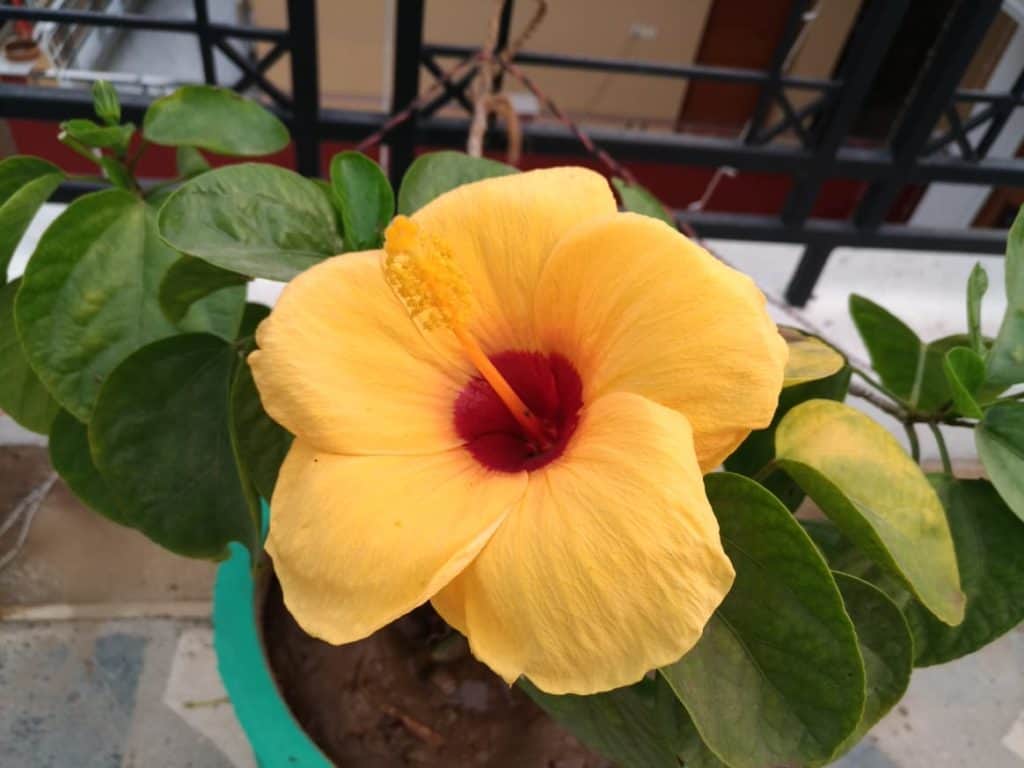The Hibiscus is a great plant blooming an even excellent flower. Its vividly colored petals prove to be of great significance to a garden, while also helping in the pollination of the plant. It also makes our list of The 20 Best Permanent Flowers in India

The plant belongs to the family name Malvaceae and belongs to a family that is quite large. The shoe flower is native to subtropical and tropical regions. It has various names called rose mallow, rose of Sharon, and tropical Hibiscus.
The flower is large and contains 5 or more petals, colors ranging from orange to white. And ranges between heights of 14 to 18 cm tall. In some species, the flower color changes with age.
Varieties
Botanists have found that the Hibiscus has around 679 species, which include both annual and perennial plants. These plants are mainly grown as ornamental plants and made as a tea in both hot and cold countries. Here are some of the varieties of Hibiscus mentioned below
Native Hibiscus
This is one of the most important flowers out there, also called as rosemallow. The plant is common in Florida and native to the southern U.S.A. and can grow between 4 to 8 feet tall.
Hardy Hibiscus
Popularly known as the rose of Sharon, these are cold-tolerant perennial shrubs and are beautiful for their appearances with pink, white and purple colors.
Tropical Hibiscus
Tropical Hibiscus, or Hibiscus Rosa Sinensis plants are very large and showy with bright colors. These plants mostly overlap within their species and are native to Florida.
Perennial Hibiscus
Perennial Hibiscus plants are found from dwarf size to a large size. These are mostly hardy and are found in the tropical regions.
Annual Hibiscus
Annual Hibiscus plants are not considered to be true Hibiscus plants. They can, however, be grown as one of them, and are native to tropical regions. The ancient and modern Chinese culture prefers these plants since they found in a variety of colors.
17 Different types of Hibiscus in Indian Home Garden:
How to Grow Hibiscus
The Hibiscus can actually be grown using two methods, the seed, and the stem. We’ll go through each of the methods separately, and you can adopt whichever method suits you best.
How to Collect Hibiscus Seeds or Make Hybrid Variety
If you have a hibiscus plant at home, you can collect seeds from them and grow more. Or you can also experiment by hybridizing two hibiscus varieties. Play the video below to learn how:
Grow using Seeds
The seed is to be sown with good exposure of sun and with good moist soil. By turning the soil a bed must be formed of 6 – 12 inches and also removing the debris as much as possible
Note: It is recommended that the seed be planted on a cloudy day to avoid transplant shock.
A hole must be dug, big enough to accommodate the root ball. Once the roots are grown, cover it with soil and tamp down firmly.
Water must be sufficient enough to the plant that it saturates the roots and soil.
It is important to control the formation of weeds as the plant starts to grow. Weeds are a very major threat to the plant. Using mulch to prevent the spread of weeds is a good practice.
Mulches also help to maintain the moisture of the soil and also it’s temperature.
Note: The mulches are not to be kept near the stems as there are possibilities that it can rot.
It is also necessary to check the soil to make sure it is damped at the least until an inch deep.
Watering early in the morning can help the plant improve and grow fastly.
Until the plants become extremely established there must be protected from direct sunlight.
After a little bit of growth, a little amount of fertilizer can help the plant improve its growth.
It may be important to note that the flower lasts only one day. So, if you see one fall, there is nothing to worry about. Many more are going to grow back again.
Grow using Stem
Probably the easiest method to grow the Hibiscus plant without having to worry about the soil texture and moistness in the initial stages is to grow the pant using stems.
Firstly, the plant must be taken out and be searched.
Then, the secateurs within the leaves are to be cut and to be trimmed to about 4 to 6 inches long.
Now, use the cutter to make an angle of about 45 degrees and make a cut through the stem. The base can be wounded so it is advised to introduce it with the cambium layer (the layer that helps in the plant’s growth). This is to increase the production of the root.
After cutting the plant, these roots must be kept in the water for some time. Make sure the plant is fed with enough sunlight. Also, it helps to change the water from time to time.
Once the roots start showing up a bit, take 50% normal garden soil, 20% fine sand and 30% organic compost and mix them up to form the foundation soil.
After this, place the stem submerged in the soil, and keep it there for about 45 days. The soil will slowly help the plant to grow into a strong, brightly colored flower.
So, those were the two methods on how to grow your very own Hibiscus plant in eas to follow steps. If you like this article, then you should definitely check out our blog where we talk about all things gardening.
Be sure to head over to ElitechDrip to get special offers on garden irrigation kits and gardening tools.

